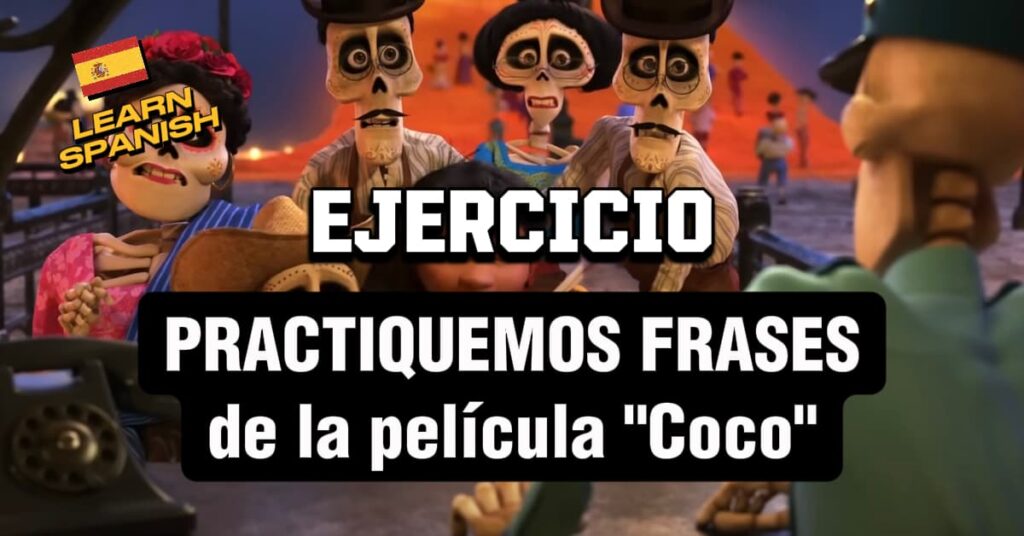Listening comprehension exercise to learn the difference between «también», «tampoco», «yo sí», «yo no»
también and tampoco are two adverbs that are frequently used to express agreement with something that has been said previously. Many students have difficulty using them because they do not understand the difference between “también” and “tampoco”, since they seem similar but have different functions. It is important to learn them because they are fundamental to communicate accurately and naturally in Spanish.
These expressions are used as a response to an initial sentence expressing agreement. They are also closely related to the expressions “yo sí”, “yo no” which are used to express disagreement.
How to use “también” and “tampoco”
The difference between “también” (also) and “tampoco” (neither) is that the former is used in affirmative sentences, while the latter is used in negative sentences. There must be an agreement between the two phrases in order to use these expressions.
- affirmative sentence 👍 + affirmative sentence 👍 → también (also)
- negative sentence 👎 + negative sentence 👎 → tampoco (neither)
También is an adverb of equality. That is why it is used when two affirmative sentences express the same concept.

Yo tengo dinero

Yo también
Tampoco is an adverb of equality but it is used with negative phrases. When two negative phrases express the same concept you should use tampoco.

Yo no tengo dinero

Yo tampoco
However, if the sentences express an opposite concept, you should use yo sí (I do), yo no (I don’t).
Opposite phrases: yo sí (I do), yo no (I don’t)
- negative sentence 👎 + affirmative sentence 👍 → yo sí (I do)
- affirmative sentence 👍 + negative sentence 👎 → yo no (I don’t)
When the sentences do not coincide and are opposite it is not possible to use the adverbs “también/tampoco”. In this case we use “yo sí”, “yo no”.
Look at the examples:

Yo no tengo dinero

Yo sí

Yo tengo dinero.

Yo no
Of course, it is not obligatory to use the first person (yo). You can use other persons: nosotros también (we too), ellos también (they too), tú tampoco (you neither), ellos sí (they do), etc.
EXERCISE – Practice these expressions with these 20 dialogues
- Look at the images
- Listen to the sentence
- Choose the correct answer
SPANISH EXERCISE
también, tampoco, yo sí, yo no
20 dialogues – Intermediate Level A2, B1, B2
Listen to the sentence, look at the image and choose the correct option
(if the answer is correct you will hear the pronunciation 🔊)
✨ TIP: Below you can see the transcription of the audios.

✏️ You may also practice…
14 frases para practicar la diferencia entre «muy» y «mucho»

¿Te gusta practiquemos.com?
Give me a 5-star rating
You help me a lot. Thank you very much 🙏
★★★★★
Transcription of the audios
-
El año pasado estuve en París. Last year I was in Paris.
-
Nunca he estado en San Francisco. I have never been to San Francisco.
-
Ayer fui al cine y comí palomitas. Yesterday I went to the movies and ate popcorn.
-
Yo no hablo alemán. I do not speak German.
-
Ayer me levanté a las siete. Yesterday I got up at seven o’clock.
-
Lo primero que hago cuando llego a casa es lavarme las manos. The first thing I do when I get home is wash my hands.
-
Nunca he montado a caballo. I have never ridden a horse.
-
Yo soy profesora de español. I am a Spanish teacher.
-
Yo no soy peluquera. I am not a hairdresser.
-
Hace 3 años hice un crucero por el Caribe. Three years ago I went on a Caribbean cruise.
Did you enjoy the exercise?
Write a comment. I love to know your opinion ❤︎





